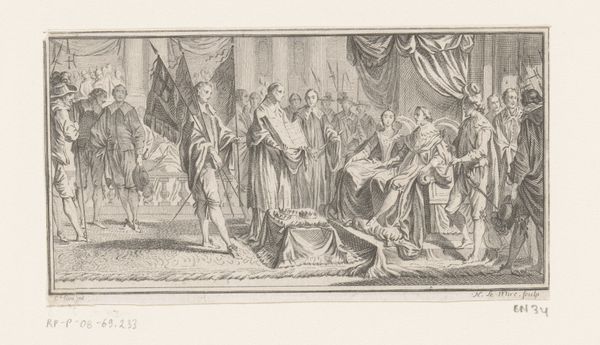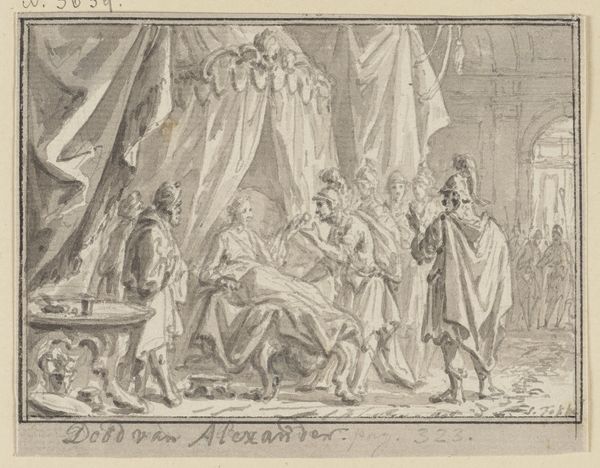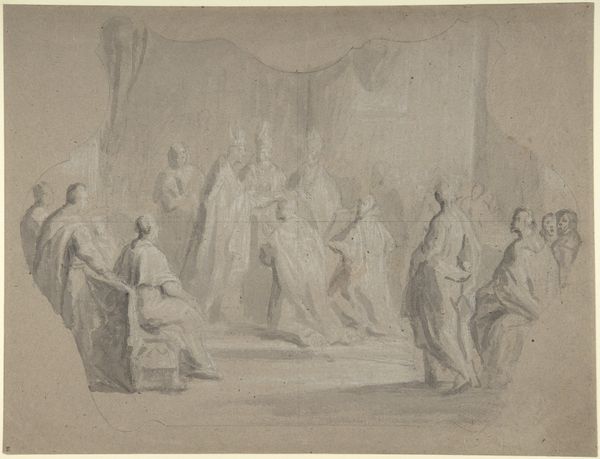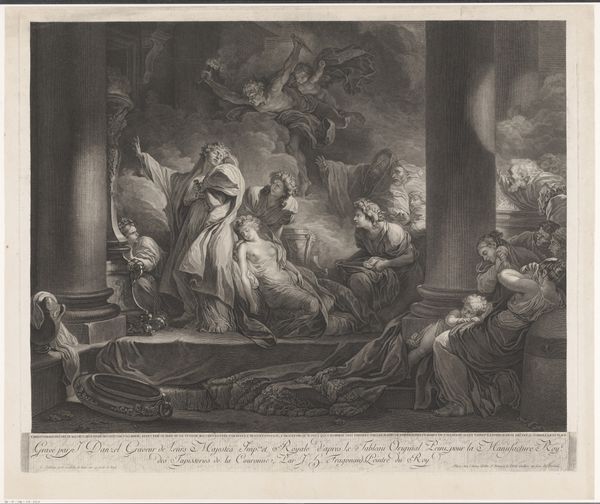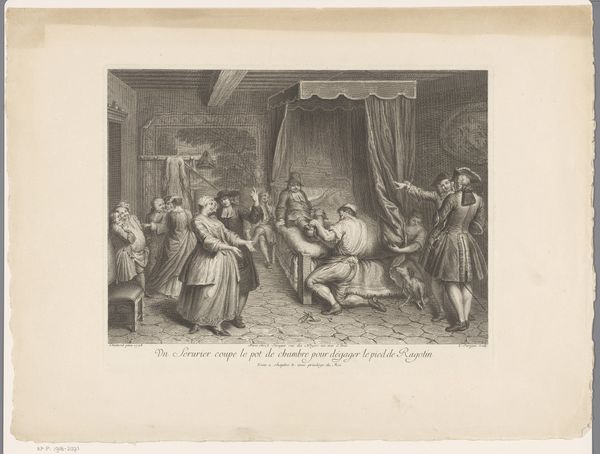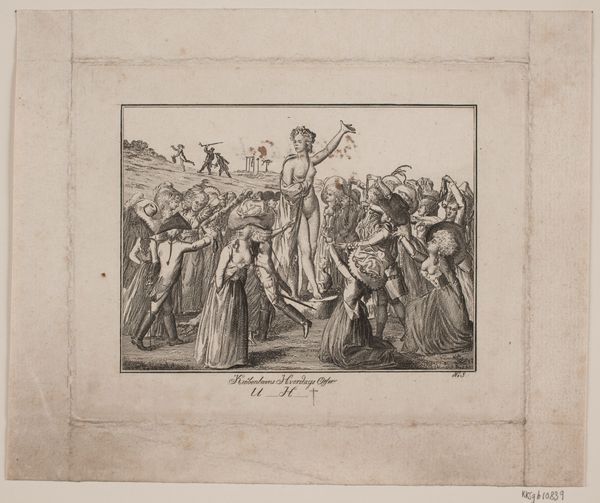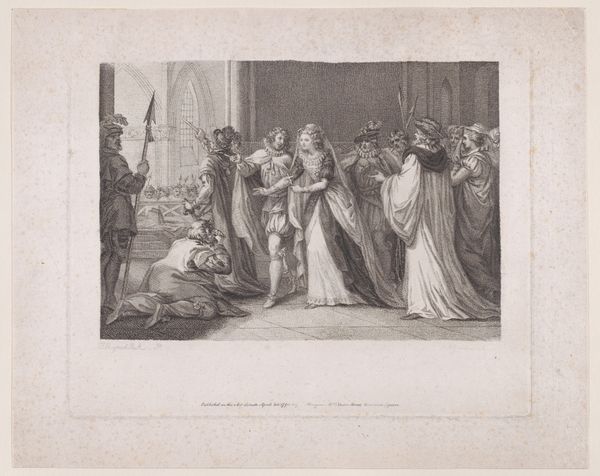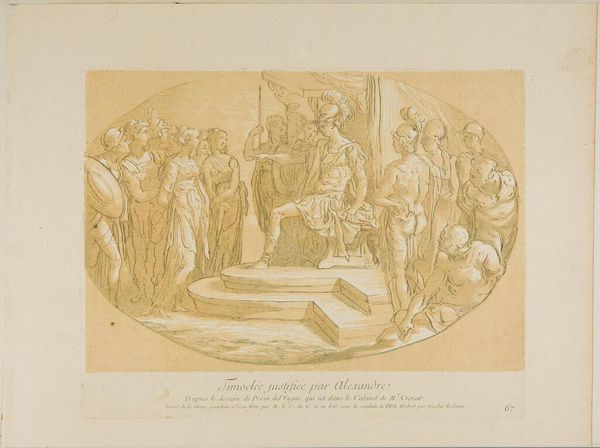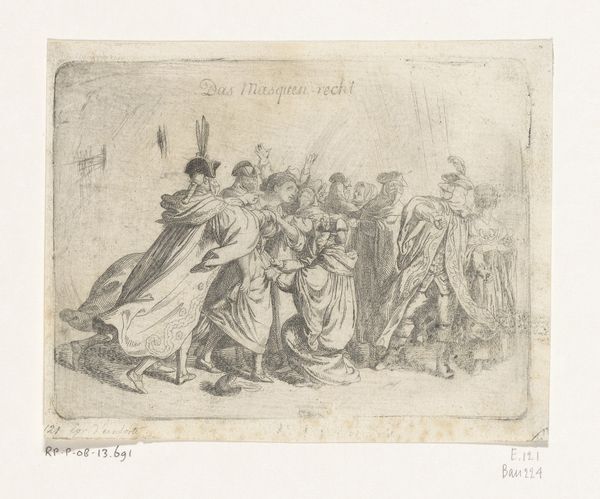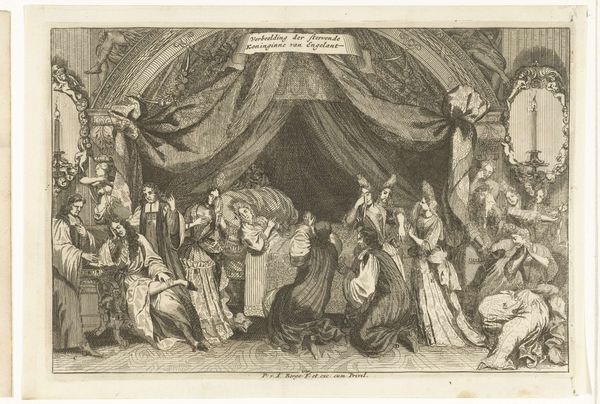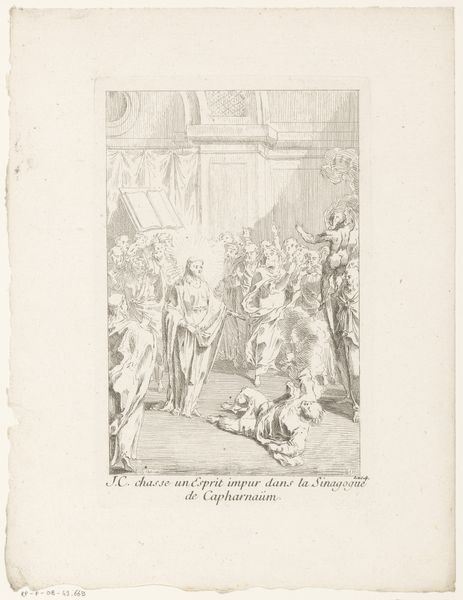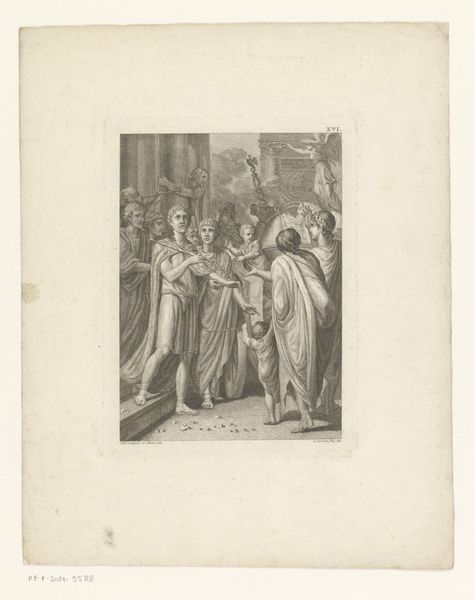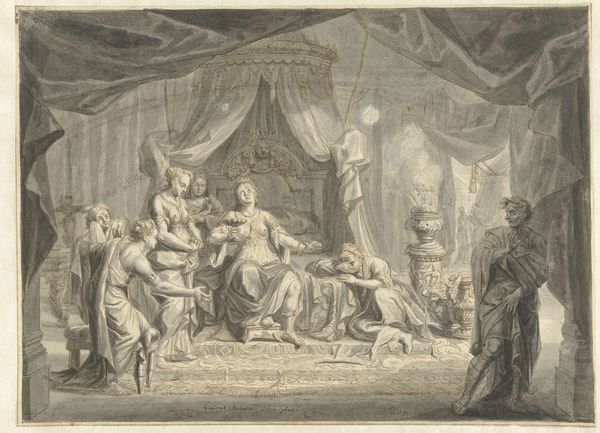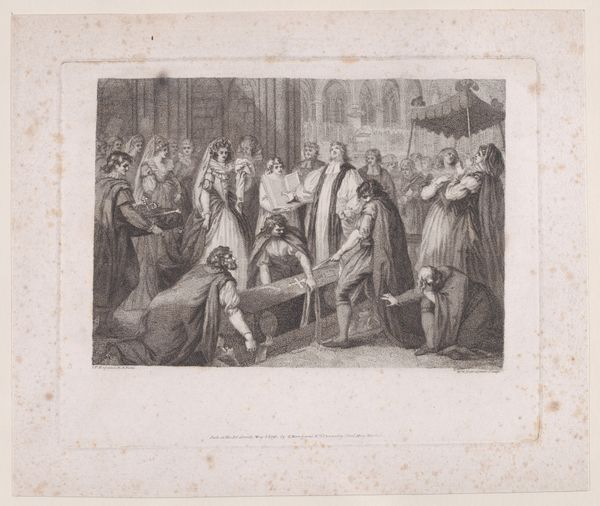
Richard Løvehjerte. Scene fra romanen "The Talisman" (1825) af Walter Scott 1825 - 1828
0:00
0:00
drawing, pencil
#
drawing
#
narrative-art
#
figuration
#
romanticism
#
pencil
#
history-painting
Dimensions: 162 mm (height) x 232 mm (width) (bladmaal)
Curator: This graphite drawing from around 1825 to 1828, held at the SMK, is by C.A. Lorentzen and is titled “Richard Løvehjerte. Scene fra romanen ‘The Talisman’ (1825) af Walter Scott,” or Richard the Lionheart. Editor: The immediate impact is striking – such dramatic figures sketched with such delicacy. The linear quality creates an otherworldly atmosphere. What scene from Walter Scott’s “The Talisman” do you suppose it captures? Curator: Likely it illustrates a crucial plot point—perhaps Richard recognizing Saladin in disguise or some divine intervention. Walter Scott was extremely popular then. Look how Lorentzen is using figures as stand-ins for an almost mystical view of British national character, lionizing Richard as brave. Editor: It's curious to me how economical the line work is, the sketchiness. What interests me are those spears crossed above the seated figure. Are these simply props, indicators of royalty and valor, or is there an engagement with the tools and symbols of medieval power in their rendering? Curator: Crossed spears would certainly amplify the inherent romanticism – that look back to what was considered the noble origins of European power. Notice the flowing drapery that all but hides the bodies. To me, this whispers of an ideal, perhaps unrealizable, moment in cultural memory, of kings, honor, and maybe of impossible peace. Editor: I see those figures almost disappearing under layers of romantic costuming and sketched environments. How interesting to reduce these signifiers to their most basic, like stage props for a nationalist drama. And yet it also creates this distance between the event and ourselves. Curator: Exactly. It speaks to Romanticism's preoccupation with past eras viewed through the lens of contemporary sensibilities, a yearning that perhaps tells us more about the present than the past. Editor: Agreed. Studying the production, materiality and techniques, and contrasting it with its source context offers valuable insights. Curator: A captivating, very romantic portrayal of an episode brought to life again by pencil.
Comments
No comments
Be the first to comment and join the conversation on the ultimate creative platform.
